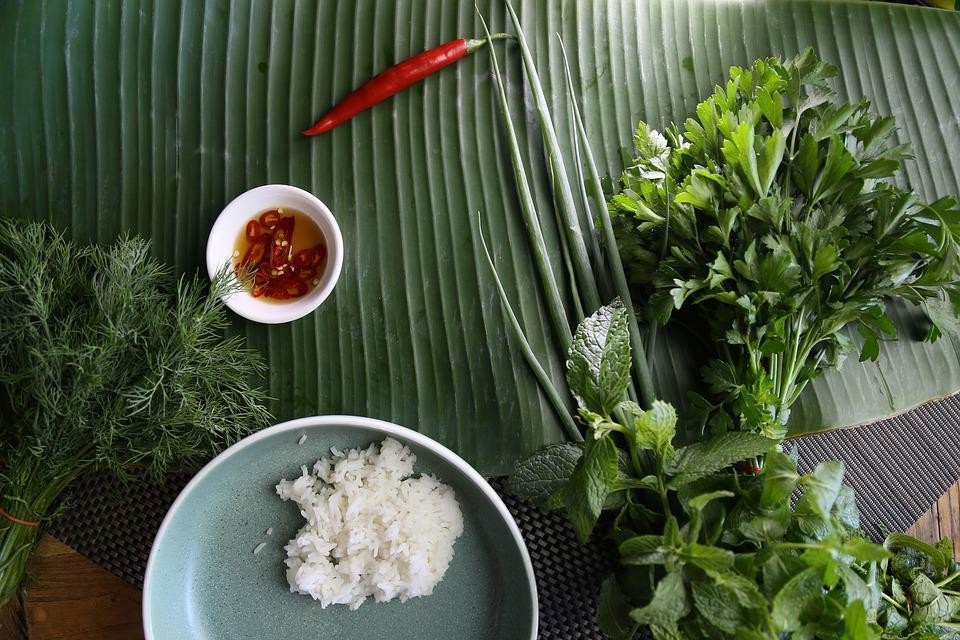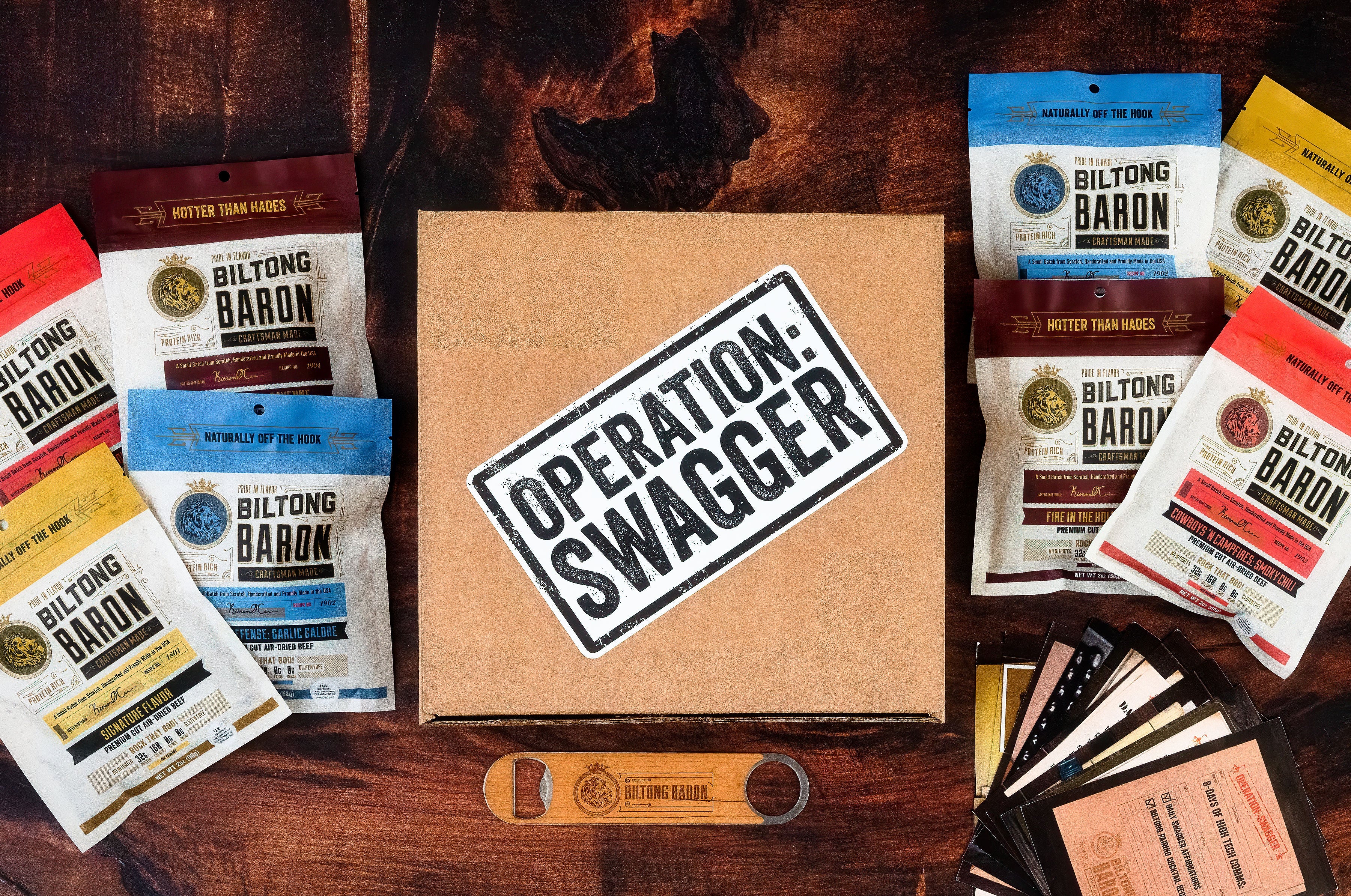-
Recently Viewed
You have no recently viewed items.
-
Featured Brands
- All Products
- About Us
- Contact Us
- Our Blog

Neua Dad Deow: Thai Beef Jerky
Think about it: a bowl of oh-so-sticky rice, lines of crispy beef strips and a side of chili dipping sauce. It’s Thai beef jerky, you say? We’re sold.
Actually, Thai food alone could make the world go ’round — it’s that good! But have you ever tasted Thai beef jerky?
If you’re unfamiliar with this delectable dish, we’ll give you the rundown here.
Unfortunately, few U.S. restaurants serve genuine sun-dried Thai beef jerky. If you’re lucky enough to snag it, make sure to order that bowl of warm sticky rice. You won’t regret it!
And for folks without an authentic Thai restaurant nearby, we’ll tell you how to make Thai beef jerky at home. After all, everyone in the Jerky Universe deserves the chance to taste jerkies from around the world!
[Related: How To Make Beef Jerky: Your Guide to Homemade Beef Jerky]
Thai Beef Jerky: History, Creation and Cuisine
Thailand is — in a word — hot. That’s a major component in the history and creation of Thai beef jerky.
History and Origin
Frankly, Thai beef jerky has a somewhat vague history.
Before modern preservation methods, people always needed to keep meat handy before it spoiled. (You’ll notice that as a common thread among pretty much all jerkies’ histories.)
We know Thai peoples have been sun-drying (as well as smoking and salting) meats of all kinds for centuries. They had to preserve protein for travel and the rainy months. Those rainy months played a big role in the origin of Thai beef jerky — monsoon season doesn’t bode well for any meat staying fresh.
Plus, beef in particular wasn’t — and still isn’t — nearly as common as pork or chicken in Thailand, so keeping it from going bad was paramount. Beef was a rarity (often a delicacy).
Nowadays, if you’re lucky enough to visit a Thai open-air marketplace, you should spot people hanging racks of pork and beef for sun-drying. But you should see far more than beef — other sun-dried jerkies include pork, veal, fish, chicken and mushroom.
Because Thai beef jerky is so delicious and no longer a true delicacy, its popularity continues to rise. And although pork remains the reigning meat (including for jerky) in Thailand, beef demand is on the increase.
Of course, we’d never discourage you from trying jerky of any variety here in the Jerky Universe. That said, Thai beef jerky is tough to beat.
Climate and Creation
Remember when we mentioned Thailand is hot?
We’re talking temperatures usually in the 70- to 90-degree Fahrenheit range. It also has a tropical climate — you’re likely to see rain, but you’re also likely to see tons of sunshine.
Thailand’s abundant sunlight offers a quick fix for perishables. A short sun-drying spell dehydrates only the outside of the meat while keeping the inside moist. Then, a bout of pan-frying or deep-frying seals in the juices while cooking the meat.
In fact, “neua dad deow,” the common Thai phrase for sun-dried beef jerky, basically means “one-sun beef.”
Flavors and Texture
Few jerkies are complete without a mouthwatering marinade.
Now, you might hear “Thai food” and immediately think “spicy,” but Thai cuisine follows a careful balance of flavors. (The same goes for many Asian dishes.) The chilis commonly used in Thai sauces and marinades are definitely hot, but you’ll also note a distinct sweetness.
Thai cuisine is also a melting pot of flavors and methods, including native Thai, Indian and Portuguese. The mix of those spices and methods becomes perfect in Thai beef jerky.
In terms of texture, you can expect a crispy-yet-tender mouth feel, almost like thin steak. That slightly chewy, slightly moist texture and the marinade are part of what make Thai beef jerky so dang good.
Plus, it goes great with dozens of dishes and recipes. (Yes, we still recommend sticky rice.) You can eat Thai beef jerky like nuggets, tear it into shreds or dip the strips in sauce.
Any way you eat it, you’ll have an unforgettable experience.
[Related: What’s the World’s Hottest Beef Jerky?]
How To Make Thai Beef Jerky at Home
It’s time to get down to business.
Because it’s often a struggle to find Thai beef jerky, you might as well make some yourself! Of course, an authentic Thai beef jerky recipe wouldn’t be complete without the sun step.
That said, hanging beef strips in your backyard might be unfeasible … and the neighbors may have questions. No worries — you’ve got options. But first, the beef!
Choose a Cut of Beef
The jerky-making masters out there might be surprised that you actually want some fat on the meat when making Thai beef jerky.
One pound of round steak is a great choice, and sirloin is a solid bet when you want less grease. But you really don’t have to be choosy when selecting Thai beef jerky cuts.
When you’ve made your choice, cut the meat into strips about a half-inch thick (a tad extra thickness doesn’t hurt). You can choose the strips’ length and width — the dimensions vary and really come down to what you like.
Store the strips in the fridge so they won’t spoil. Now, don your marinating hat!
Note: If you want to make more Thai beef jerky, use two pounds of beef! Just make sure to mix enough marinade to coat it all.
[Related: What Is the Best Meat To Make Beef Jerky?]
Mix a Traditional Marinade
The great thing about making your own Thai beef jerky is that you can customize the flavors and nutrition. But if you want to stick to an authentic Thai beef jerky recipe, grab these staple ingredients:
- 4 tablespoons fish sauce
- 2 tablespoons oyster sauce
- 2 teaspoons sugar
- 3 teaspoons ground pepper
Next, whisk the ingredients together in a bowl. Add the strips to the marinade, and cover the bowl with plastic wrap. Like with any good marinade, make sure you coat the strips thoroughly.
Stick the bowl in the refrigerator overnight. The next day, uncover the marinated beef strips and get to drying.
Note: Want to shake it up a bit? Try a Thai beef jerky variant called “heavenly beef,” using honey, coriander and cumin in your marinade. You can tweak the sweetness level and spices if you want less sugar or heat.
To really please your sweet tooth, serve coconut sticky rice instead of traditional sticky rice with Thai heavenly beef jerky. We’re already drooling.
Dry the Beef in the Sun — or Oven
The next step is drying the beef strips. To get the full flavor profile, use a bamboo drying rack in bright, hot sunlight (if you can).
Sun-Drying
Spread the strips on the drying rack, and make sure they don’t touch or overlap. Hang the rack in direct sunlight for one day.
Note: Please let the beef bask in the sun’s glory. But for safety’s sake, you can cover the rack with a mosquito net to keep pests like flies away.
Oven-Drying
Preheat a conventional oven to 185 degrees Fahrenheit. Place the strips on a foil-lined baking tray so that they don’t touch or overlap. Lay a metal drying rack atop the strips.
Leave the strips to dry in the oven for 4.5 hours.
Note: When oven-drying jerky, it’s standard to prop open the oven a bit so moisture can escape.
Option: Store for Later
Here’s a really cool part of this jerky-making method: You can freeze some meat for later.
If you prepared extra and want to stash it, just seal the strips in an airtight, zip-close freezer bag. Label the bag with the date so you’ll know when to cook the rest — no one wants to get sick. We recommend not leaving marinated meat, sun-dried or not, frozen for over one month.
Now, it’s time to fry the marinated strips.
Fry the Marinated, Sun-Dried Beef Strips
To use the traditional method, heat a thin layer of neutral oil in a frying pan over medium heat. Add a beef strip to the pan when the oil is hot. Let it fry until it appears cooked.
Note: If you prefer rare meat, don’t be afraid to pull it out of the pan a bit early. You’ll get a more genuine Thai beef jerky texture.
If you have an air fryer, skip the skillet-frying method and go straight to your appliance. Set the air fryer to 180 degrees Fahrenheit, then fry the strips for 12 minutes.
The end result should be crispy-yet-moist beef strips with a vibe totally different from Western beef jerkies.
[Related: Traveling With Beef Jerky: What You Need To Know]
Enjoy Your Thai Beef Jerky
Like we’ve said repeatedly, Thai beef jerky goes great over or with a bowl of sticky rice (seriously). But like all jerkies, you can take it with you on the go.
Snack on it before hitting the gym, satisfy on-the-road cravings or bring some to a party. Hint: Thai beef jerky and beer make a top-notch combo.
However you decide to eat it (on the couch works), Thai beef jerky may be your new must-have!
Hmm … while still delicious, pad Thai suddenly seems a tad duller.
Traverse the Jerky Universe for More Stellar Jerky Flavors
Curious about other exotic jerky varieties? You're in luck — the Jerky Universe has guides to jerkies from all around the world, including these tasty types:
But there's even more to explore in the Jerky Universe — follow us on social and subscribe to our newsletter below!
Featured image via Pixabay
- Choosing a selection results in a full page refresh.









